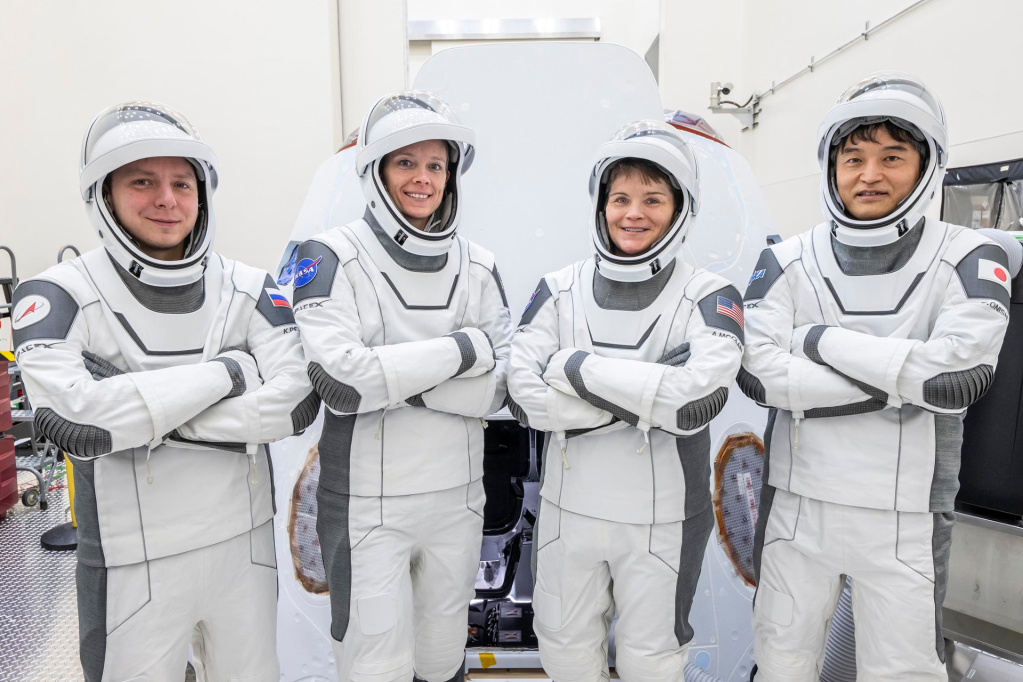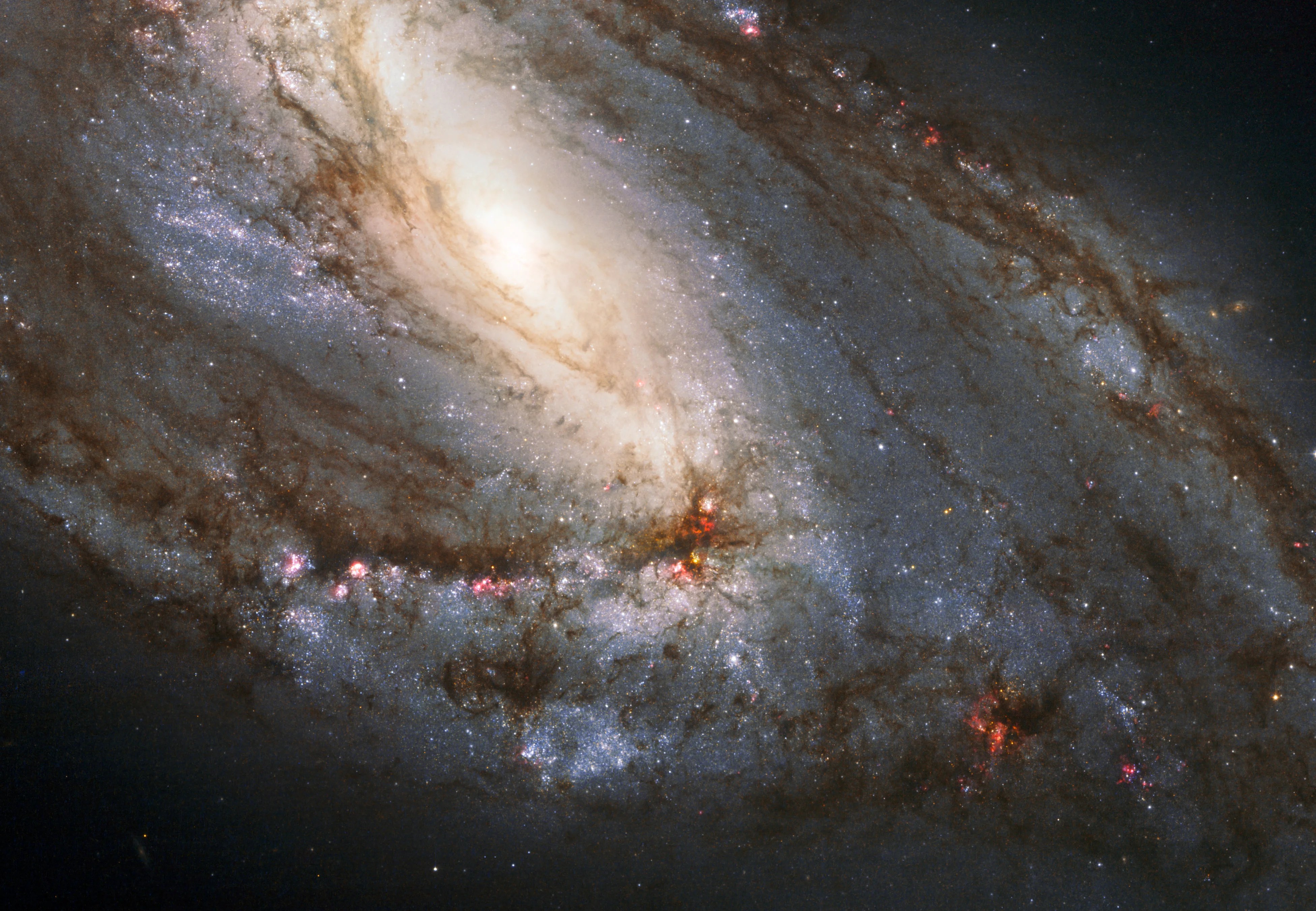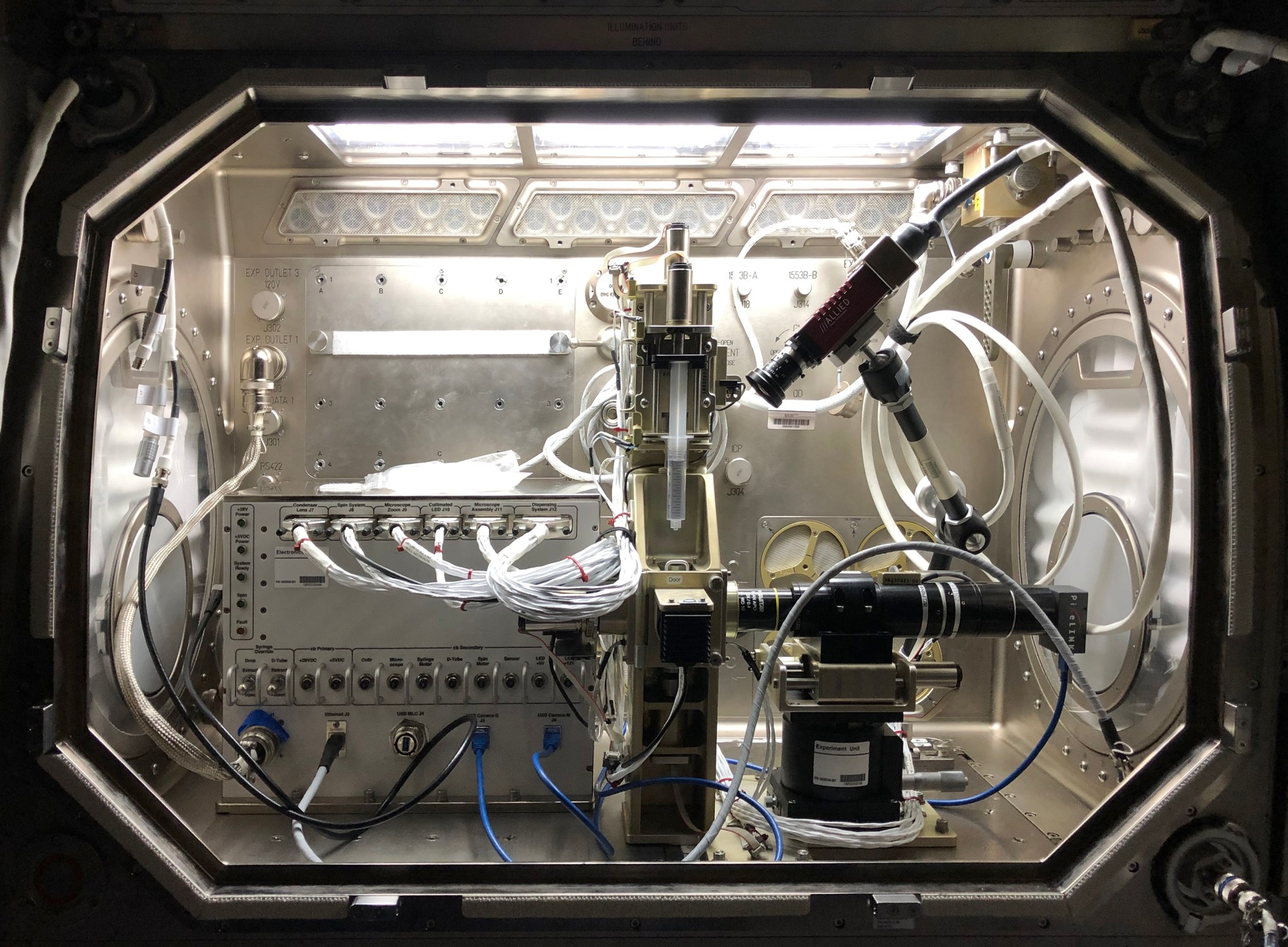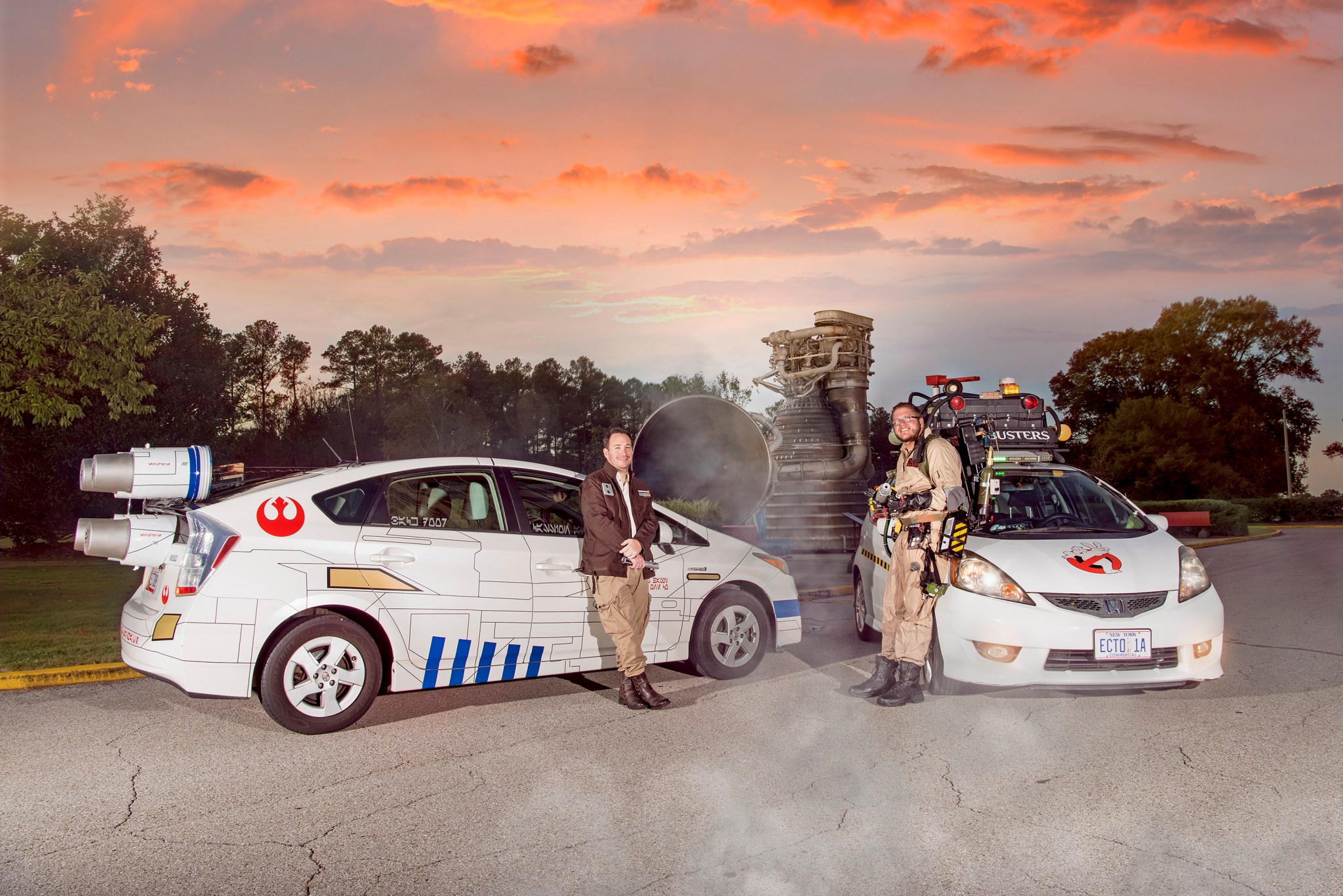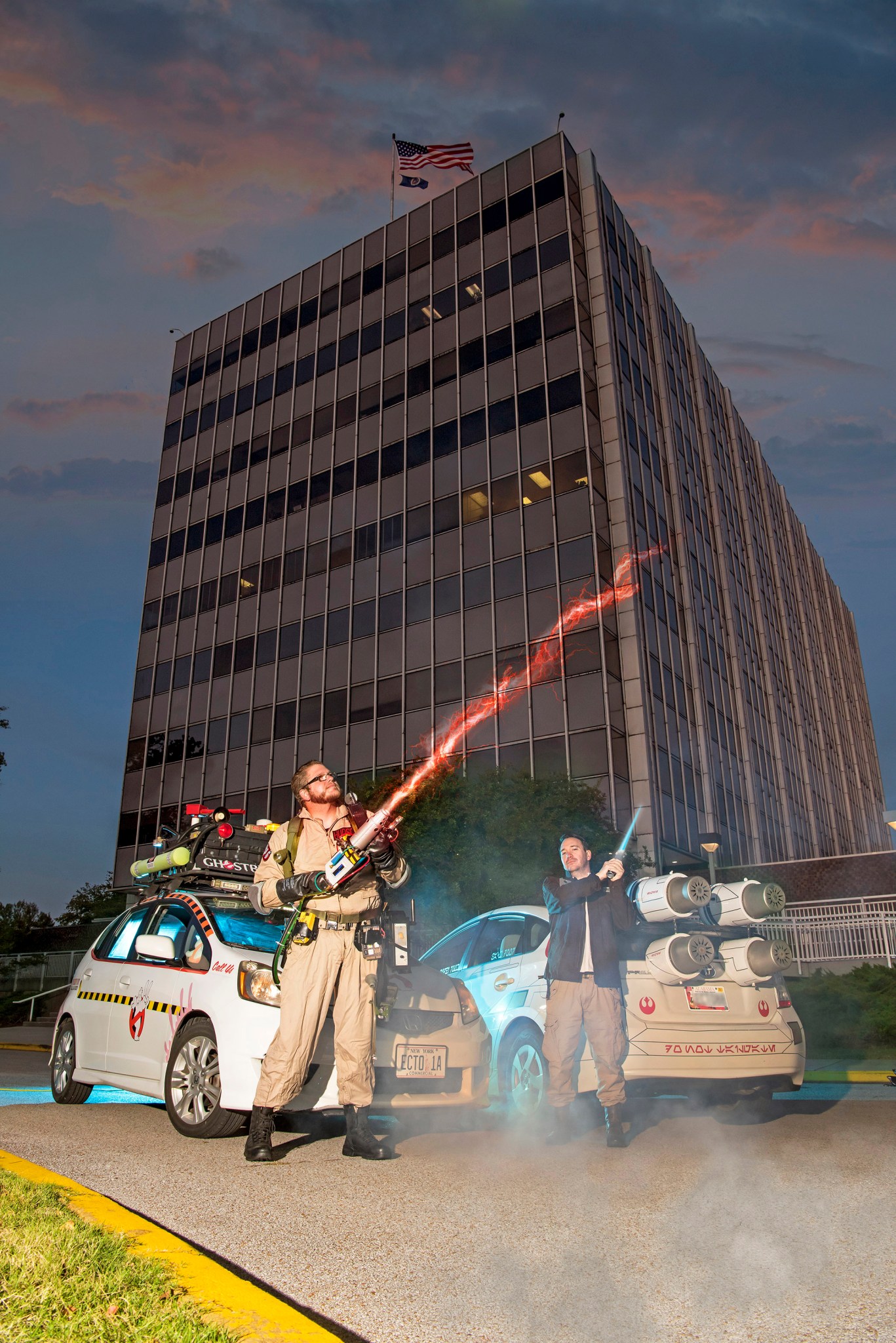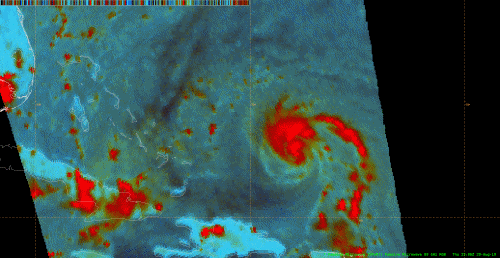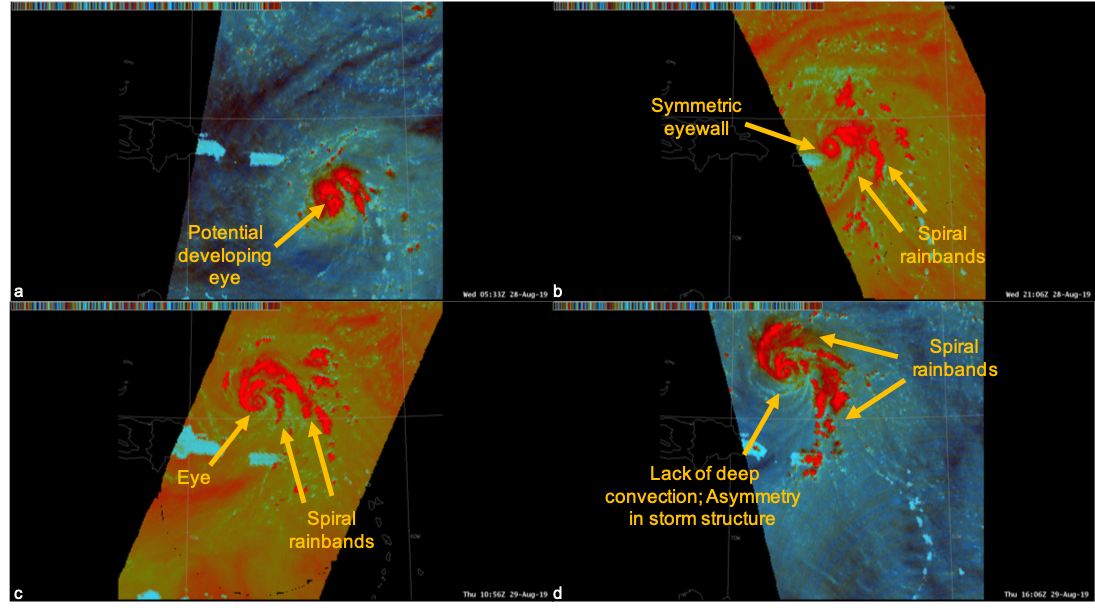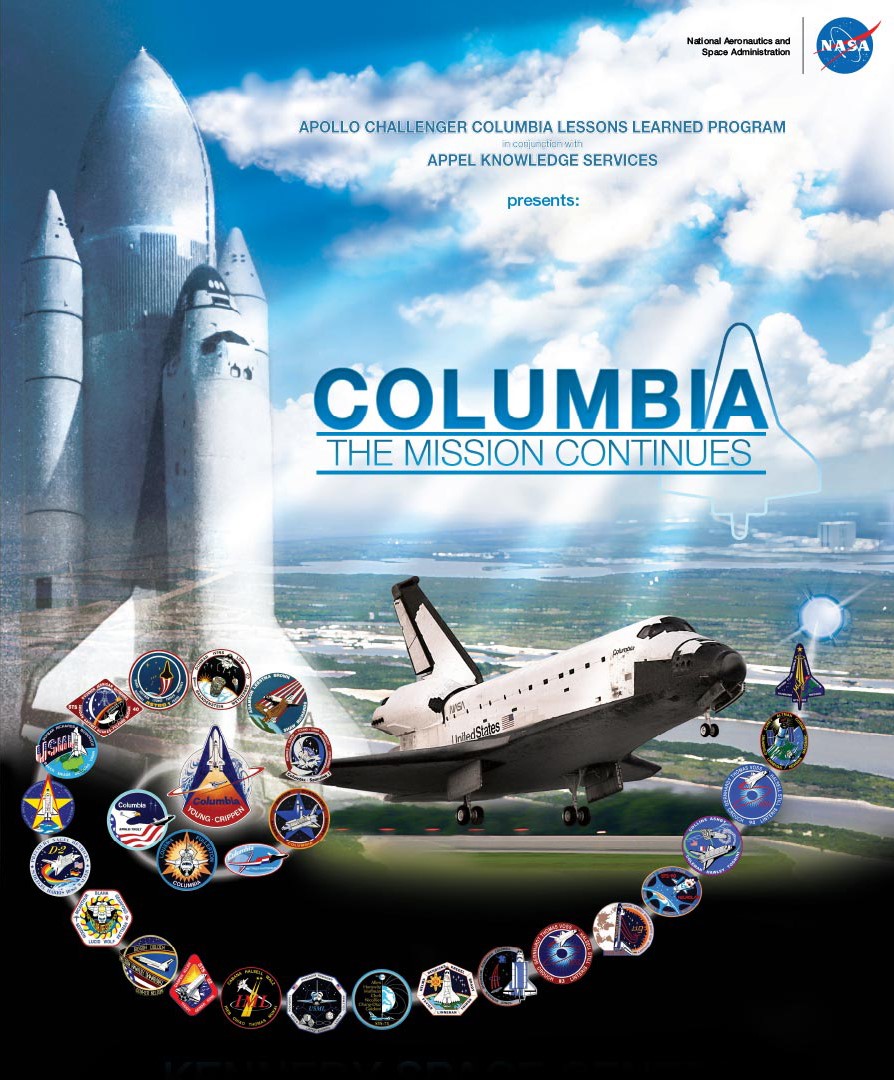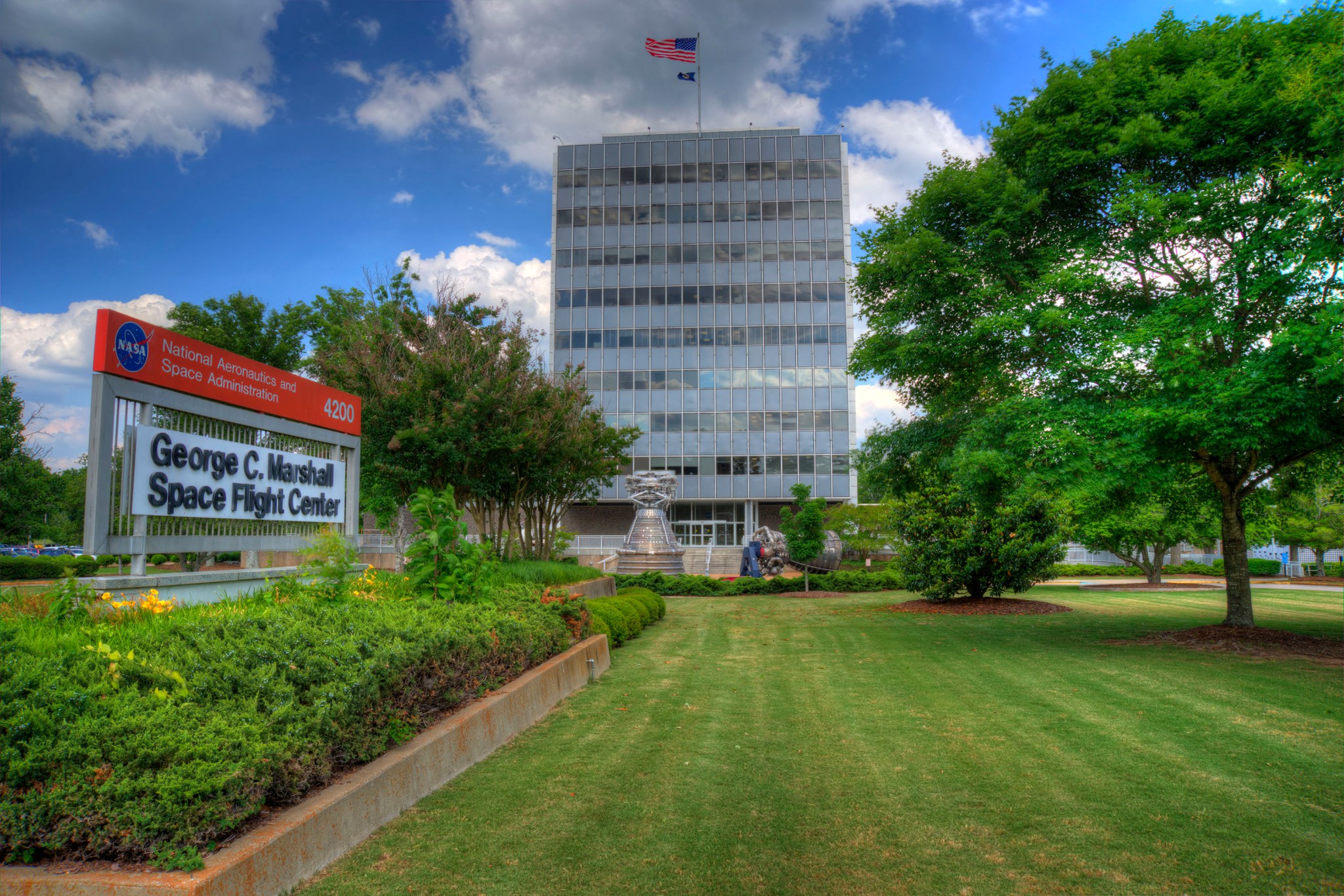In This Week’s Star
- NASA, Industry Partner for Space-based Study of Potential Alzheimer’s Key
- NASA Attaches First RS-25 Engine to SLS Rocket Core Stage
- Halloween Hot Rods: Marshall Innovates for Rides to Space, Jaunts Around Town
- Marshall’s SPoRT Team Aids Hurricane Forecasting Using NASA Satellite Data
- Marshall, Team Redstone ‘Show Some Love’ at CFC Kickoff
- Marshall to Host Space Shuttle Columbia National Tour; Kickoff Moved to Morris Auditorium
- Dollars and Sense: An Accounting of Flex Friday’s Inaugural Year
- Lead Propulsion Engineer at Intuitive Machines Delivers October Tech Talk
- This Week in NASA History: First Flight of FOXSI – Nov. 2, 2012
NASA, Industry Partner for Space-based Study of Potential Alzheimer’s Key
By Rick Smith
An innovative experiment underway on the International Space Station could help researchers make new progress in the fight against aggressive neurodegenerative diseases such as Alzheimer’s and Parkinson’s.
The Ring-Sheared Drop experiment, developed and led by Teledyne Brown Engineering of Huntsville, will be housed in the station’s Microgravity Science Glovebox to enable study of the formation of potentially destructive amyloid fibrils, or protein clusters, like those found in the brain tissue of patients battling neurodegenerative diseases. Such illnesses may cause neurons, the drivers of the human nervous system, to become damaged or inoperative.
Normal brain functions may be disrupted by amyloid fibrils. These proteins can denature — or lose characteristic properties — and precipitate out of solution. As they accumulate over time, they may disrupt the healthy function of tissues and organs. In cases of brain function and diseases such as Alzheimer’s, that disruption can be profoundly debilitating and even fatal.
“This project is a prime example of the amazing discoveries and advancements possible with partnering between NASA, research and industry,” said Jan Hess, president of Teledyne Brown. “Our hope is that this experiment brings the scientific community closer to unlocking the mysteries of this life-altering disease that affects so many people worldwide every day.”
In Earth-based experiments, researchers determined that amyloid fibrils may be created by shear flow, or the difference in flow velocity between adjacent layers of a liquid. In the case of ground experiments, that formation is affected by the presence of container walls and by convection, or the circular motion that occurs when warmer liquid rises while cooler liquid descends.
The goal now is to conduct experiments in microgravity — in a containerless reactor — where the liquid specimens form spherical drops, containing themselves via surface tension. Researchers will “pin” a droplet of liquid between two rings and cultivate amyloid fibrils for study.
“Experimentation in microgravity affords the opportunity to study amyloid fibril formation under conditions that eliminate unwanted effects such as contact with solid walls which can affect the results of normal laboratory experiments,” said Kevin Depew, a researcher in the ISS Projects Office, part of NASA Marshall Space Flight Center’s Human Exploration Development and Operations Office. “The team has worked very hard and we are expecting a great return.”
The project partners, led by principal investigator Amir Hirsa at Rensselaer Polytechnic Institute of Troy, New York, also seek to extend the value of their innovative experiment hardware for other uses, adapting the Ring-Sheared Drop facility as a space-based bioreactor, customizable for other fluid studies or to grow and study cells, bacteria, algae and other materials.
The experiment was launched to the station in July on a SpaceX commercial resupply services mission. Experiments began in September, and the study is expected to continue at least two years.
Teledyne Brown developed the hardware under contract to Marshall, with funding from the Space Life and Physical Sciences Research and Applications Division of NASA’s Human Exploration and Operations Mission Directorate. Rensselaer Polytechnic Institute and Emerald City Initiatives of Huntsville also partnered on the project. Marshall manages the Microgravity Science Glovebox for NASA.
Smith, an ASRC Federal/Analytical Services employee, supports the Office of Strategic Analysis & Communications.
NASA Attaches First RS-25 Engine to SLS Rocket Core Stage
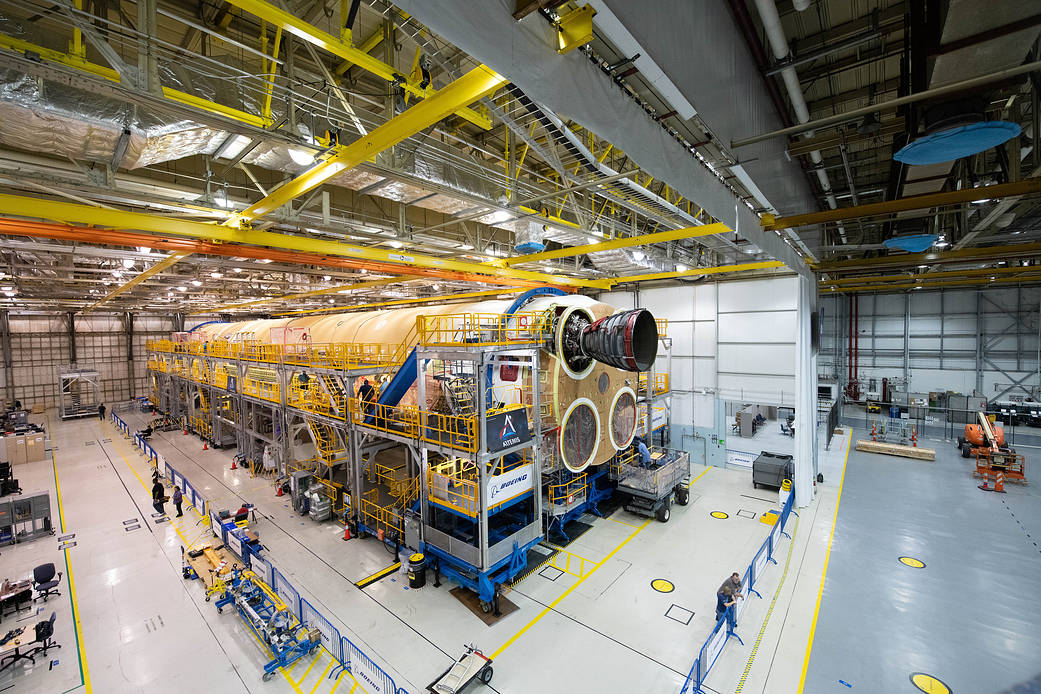
Engineers and technicians at NASA’s Michoud Assembly Facility attached the first RS-25 engine to the core stage of NASA’s Space Launch System rocket for the agency’s Artemis missions Oct. 21. Engineers and technicians are now integrating the propulsion and electrical systems within the structures to complete the installation. Integration of the RS-25 engine to the recently completed core stage structure is a collaborative, multistep process for NASA and its partners Boeing, the core stage lead contractor, and Aerojet Rocketdyne, the RS-25 engines lead contractor. The four RS-25 engines for Artemis I are modified heritage flight hardware from the Space Shuttle Program, ensuring high performance and reliability to power NASA’s next generation lunar missions. Each engine also has a special identification number, and NASA keeps a history of which engines are used on each mission. (NASA/Jude Guidry)
Halloween Hot Rods: Marshall Innovates for Rides to Space, Jaunts Around Town
By Rick Smith
Workers at NASA’s Marshall Space Flight Center know the best journeys aren’t just about the destination, but how one gets there. And as an eldritch Halloween Moon rises over Huntsville, Marshall team members are supporting innovative efforts to send new generations of explorers back to the Moon and on to Mars — and some are making their Earthbound journeys pretty innovative as well.
Andrew Denio, a Marshall information technology specialist in the Office of the Chief Information Officer, and Judson Hudson, a lab technician and computer-aided designer in Marshall’s Valve & Component Laboratory, drive a pair of out-of-this-world vehicles to and from their jobs. Though their rides may lack the striking size and power of NASA’s Space Launch System — set to loft Artemis rockets carrying the first woman and next man to the Moon’s surface in 2024 — they embody NASA’s spirit of innovation and endeavor all the same.
Denio, who joined NASA in 2018, gets around town in a 2010 Toyota Prius customized to look like a space fighter from the “Star Wars” movies. Hudson, an Aerie Aerospace contractor who has supported Marshall since 2004, drives a 2011 Honda Fit Sport modified to resemble the Ecto-1, the rolling gizmo-hauler favored by Bill Murray, Dan Aykroyd and their colleagues in the spooky comedy classic “Ghostbusters.”
Hudson, a “Ghostbusters” fan since childhood, enlisted a professional designer to produce his car’s slick graphics, but cobbled together the iconic ghost gear himself, buying hardware from local home repair stores and painting and mounting it to mimic the movie versions of the Ecto-1.
Some of Denio’s earliest happy memories involve the “Star Wars” movies, he said. He spent roughly 100 hours customizing his Prius, taking detailed pictures of the original car and carefully overlaying graphics and design features on the bodywork and windows. He fashioned the vehicle’s big engines and blasters from paint buckets and PVC piping.
Both men enjoy the double-takes and hasty picture-taking their cars elicit across the Huntsville area. Hudson has even been mistaken for a real paranormal investigator. “Apparently there are still people out there who’ve never seen ‘Ghostbusters’,” he said.
To encourage their Marshall teammates to join in the Halloween fun, Denio and Hudson even wear movie-appropriate garb to complement their sci-fi rides.
It’s all in service of NASA’s core mission, they agree: to engage and inspire the Artemis generation and fuel the innovation and the spirit of endeavor that will fly new expeditions into the solar system, put human boots once more on the lunar surface — this time to stay — and enable the first-ever crewed missions to Mars.
Supporting cybersecurity activities at Marshall, Denio appreciates the value of his behind-the-scenes role. “Without my team’s work, no one at NASA can log into a computer or even get through the doors to their offices and labs,” he said. “We empower the workforce to do their jobs, providing IT services and infrastructure supporting every critical mission the agency undertakes.”
For Hudson, teamwork and camaraderie drive his commitment to NASA’s mission. “My team occupies a very small facility, which creates a family atmosphere,” he said. “All of us are focused on contributing in small, vital ways to the agency’s enormous undertakings.”
He smiled and added: “And this time of year, of course, it’s also about the candy.”
Learn more about NASA’s Artemis Program here.
Smith, an ASRC Federal/Analytical Services employee, supports the Office of Strategic Analysis & Communications.
Marshall’s SPoRT Team Aids Hurricane Forecasting Using NASA Satellite Data
By Will Bryan
NASA has for years used its cutting-edge, space-based and airborne instruments to better understand hurricanes and give weather forecasters new insights they could use to improve the accuracy of their storm forecasts. A NASA program focused on bringing new weather research to bear on forecasting challenges is now tackling predictions of a hurricane’s strength.
The Short-term Prediction Research and Transition team at NASA’s Marshall Space Flight Center bridges the weather research and operational forecasting communities. SPoRT team members work closely with forecasters to understand how NASA technologies and data can help them make more accurate predictions. The process is a continual conversation between researchers and forecasters to develop, refine and use new tools and data sets.
SPoRT is working on new or better ways to incorporate existing satellite data into hurricane intensity forecasts, with the ultimate goal of providing the best information to those in the path of the storm.
“SPoRT’s goal is to help solve some of the toughest problems in the weather forecasting community using NASA tools and data,” said Christopher Hain, SPoRT project scientist at Marshall. “Rapid intensification near the coast poses a very significant risk because it is difficult to forecast.”
Meteorologists and weather forecasters look for signs of rapid intensification by studying a storm’s internal structure, which can then be factored into forecast models to predict the storm’s severity.
But it’s not as easy as looking at a storm’s picture. “That’s because the forces that govern intensity are largely happening inside the storm, where it’s very hard to see through a hurricane’s thick clouds and rain,” said SPoRT research scientist Patrick Duran. “But by combining satellite measurements with other data sources, we can gain a greater understanding of what’s happening within a storm.”
For example, SPoRT scientists and researchers have been experimenting with microwave data from the international network of satellites that complement the joint NASA-Japan Aerospace Exploration Agency Global Precipitation Measurement mission. They used it to peer deep into Hurricane Dorian, the first major hurricane of the 2019 Atlantic season, which lashed the Bahamas in August and September.
The team monitored changes within the storm and analyzed changing structures such as eyewalls and spiral rainbands. “In the absence of aircraft directly sampling the strength of a hurricane, microwaves tell you the most about the structure and intensity,” Hain said.
Microwaves have longer wavelengths than the infrared and visible light that are commonly used to study hurricanes. The longer wavelengths allow microwaves to penetrate deep into the storms and reveal the internal dynamics that are often obscured by the cloud tops.
“With Dorian, before it started rapidly intensifying, it looked really poor structurally from infrared,” Hain said. “When you looked at the microwave, the internal structure was actually more like what hurricane-hunter aircraft were sampling when they were flying through.”
While seeing the internal structure of a storm provides valuable data about storm intensity, tracking its lightning does too. The Geostationary Lightning Mapper on the National Oceanic and Atmospheric Administration’s Geostationary Operational Environmental Satellites R-series satellites provides near continuous lightning data. SPoRT analyzes this data to help forecasters determine the strength of a storm.
“One of the big statistics is that 92% of storms that have lightning close to their center intensify or maintain their strength,” said Christopher Schultz, a SPoRT research scientist. “When lightning is not near the core — and is way off on the periphery — it’s a sign of weakening.”
Forecasters also can analyze sea surface temperature to predict changes in hurricane intensity. SPoRT produces composite maps of sea surface temperature twice daily using data from a variety of Earth-observing satellites. Hurricanes tend to intensify when they are over warm ocean surfaces.
Bryan, an ASRC Federal/Analytical Services employee, supports the Office of Strategic Analysis & Communications.
Marshall, Team Redstone ‘Show Some Love’ at CFC Kickoff
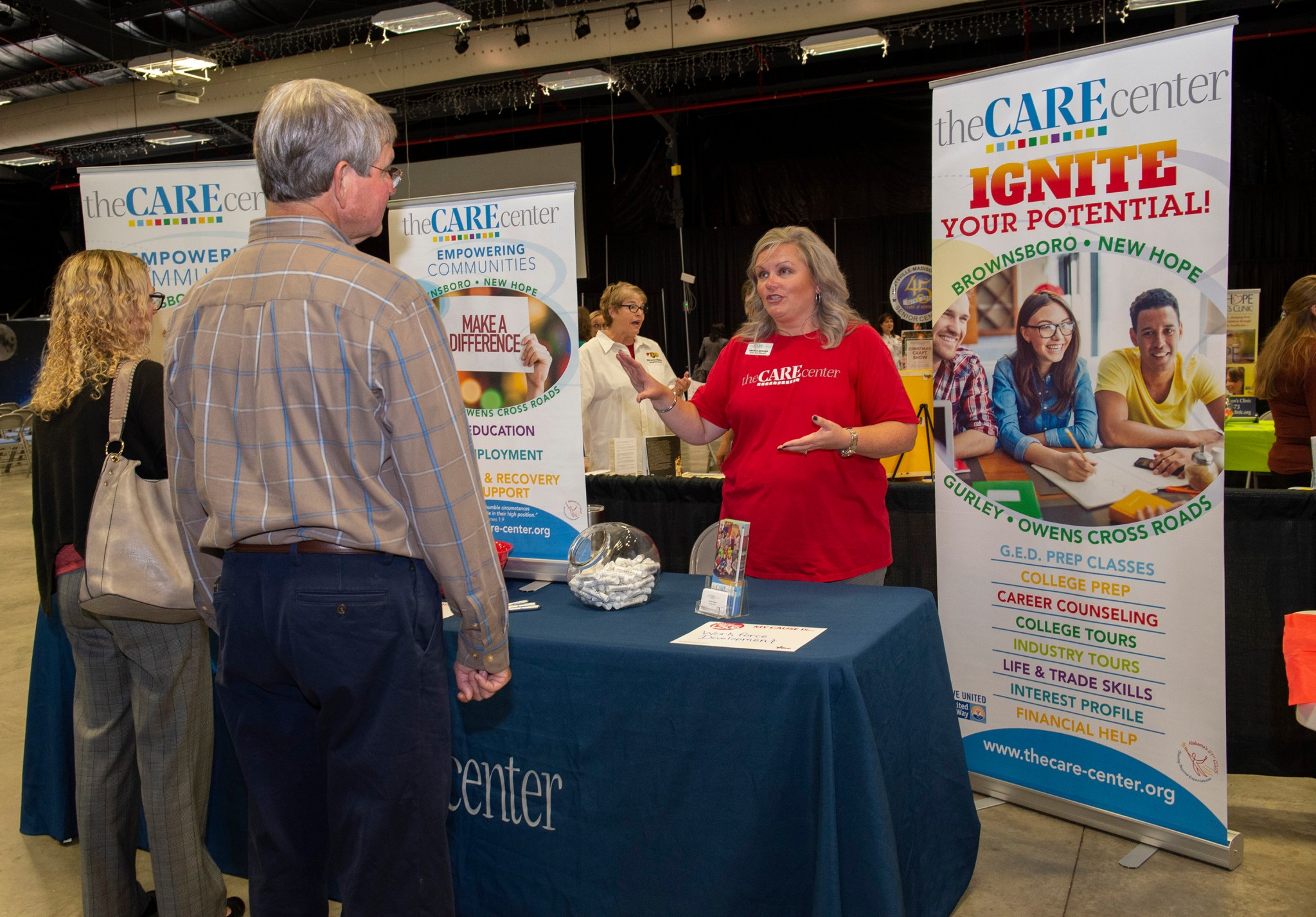
NASA’s Marshall Space Flight Center team members speak with Andrea Bridges, center, executive director of The Care Center, during the Oct. 22 kickoff for the Tennessee Valley Combined Federal Campaign, the annual federal government goodwill drive to benefit local, state and national charitable groups. The Care Center, a nonprofit which combats poverty and lends resources and aid to those in need across Madison County, was among some 50 charity vendors — the most in Tennessee Valley campaign history — on hand for the kickoff. (NASA/Emmett Given)
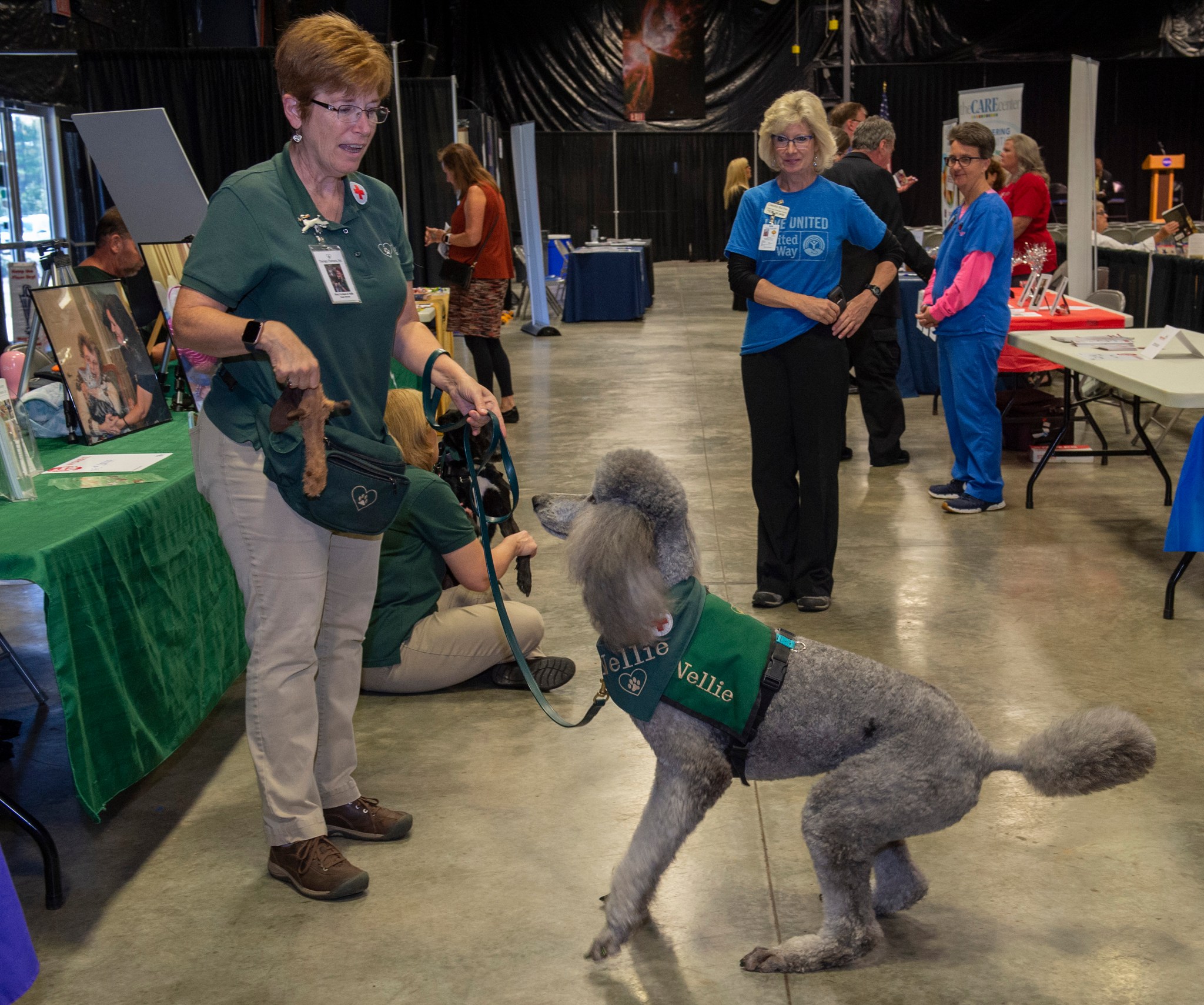
Therapy dog Nellie, a 7-year-old standard poodle, and her handler, Mary Graham, left, are happy to “Show Some Love” — the theme for this year’s CFC fundraiser — as they greet visitors on behalf of Therapy Partners, a charitable organization which provides therapeutic animal visits to schools, hospitals and long-term care facilities. The Tennessee Valley CFC kickoff also included the U.S. Army Aviation and Missile Command and federal agencies at Redstone Arsenal. The campaign will run until Jan. 12, 2020. Marshall team members can learn more and download contribution materials on ExplorNet, or sign up for updates about the national effort. (NASA/Emmett Given)
Marshall to Host Space Shuttle Columbia National Tour; Kickoff Moved to Morris Auditorium
By Taylor Goodwin
The Space Shuttle Columbia National Tour is coming to NASA’s Marshall Space Flight Center from Nov. 5-8.
A town hall featuring NASA Astronaut Barry “Butch” E. Wilmore and focused on technical authority and risk management will kick off the tour’s activities at 1 p.m. on Nov. 5 in Building 4200’s Morris Auditorium.
The Space Shuttle Columbia National Tour exhibit will open the same day in the lobby of Building 4221, with pieces of Columbia recovered after the 2003 accident on display for the remainder of the week.
Buses will be available to pick up team members from Building 4487’s south entrance and Building 4600’s south main entrance, and bring them to Building 4200. Buses will run from noon to 1:15 p.m., and will return employees to their buildings after the program.
Marshall team members will also have the opportunity to gain insight at lunch and learns Nov. 6 and 7, each from 11:30 a.m. to 1 p.m.
“Risk Leadership and Lessons Learned from Columbia,” hosted by Marshall’s Safety and Mission Assurance Directorate, will be held in Room 1103 of Building 4221 on Nov. 6. Panelists will include Safety and Mission Assurance Director Rick Burt, Safety and Mission Assurance Deputy Director Pete Allen and Bastion Technologies Program Manager Jan Davis.
“After Math: Foamology and Flight Rationale,” a case study about Columbia hosted by Marshall’s Chief Knowledge Integrator Jennifer Stevens, will be held in Room 1201 of Building 4203 on Nov. 7. Panelists will include several members of the Return to Flight team from Marshall and other centers.
Using the lessons learned from the loss of Columbia, the discussions will aim to help both Marshall’s veteran and early career engineers, leaders and workforce understand what happened in order to prevent future accidents. Panel discussions and lunch and learns will attempt to affirm the importance of listening to any and all concerns in the decision-making process as Marshall moves forward in pursuit of space exploration.
The path to the Moon and Mars goes through Marshall, making it crucial that the team understands and is prepared to handle complex decisions where mission success and lives are on the line. Using the lessons learned from Columbia, as well as Challenger and Apollo 1, the week of discussions will help ensure that Artemis and other current and future missions stand the best chance of success.
Additional information about the week’s activities will be available on ExplorNet.
Goodwin, an ASRC Federal/Analytical Services employee, supports Marshall’s Office of Strategic Analysis & Communications.
Dollars and Sense: An Accounting of Flex Friday’s Inaugural Year
By Adam Farragut
Flex Friday: You love it, your coworkers love it and, as it turns out, the budget loves it too.
Flex Friday — which allows team members at NASA’s Marshall Space Flight Center to work 80 hours in nine days, resulting in every other Friday off — has allowed the center to save almost a half a million dollars since launching in October 2018, and the Office of Center Operations believes the program could be improved even more for 2020.
Flex Friday started as an initiative to save on Marshall’s utilities usage, but quickly proved to have additional benefits. One of the biggest has been the unification of thousands of schedules around the center. This has led to increased productivity among the workforce and has even allowed the center to minimize the inconvenience and costly overtime rates often associated with maintenance of the facility.
“The success of Flex Friday has given Marshall a tremendous opportunity to devote more resources directly to our missions,” said Roy Malone, director of the Office of Center Operations.
By operating a number of buildings in a limited “weekend mode” for just 26 additional days during the year, Flex Friday savings have helped contribute to a variety of improvement projects, including life safety and fire protection systems, parking lot restriping in the 4700 Area, elevator reliability improvements and various exterior maintenance to Marshall buildings. Savings have also allowed the center to reinvest in energy conservation projects like LED lighting..
“The success of Flex Friday would not be possible without the cooperation and input from the various programs around Marshall,” Malone said. “FY19 has been a great start for the schedule. With continued cooperation from the community and some fine-tuning on our end, FY20 could be even better.”
Farragut, an ASRC Federal/Analytical Services employee, supports Marshall’s Office of Strategic Analysis & Communications.
Lead Propulsion Engineer at Intuitive Machines Delivers October Tech Talk
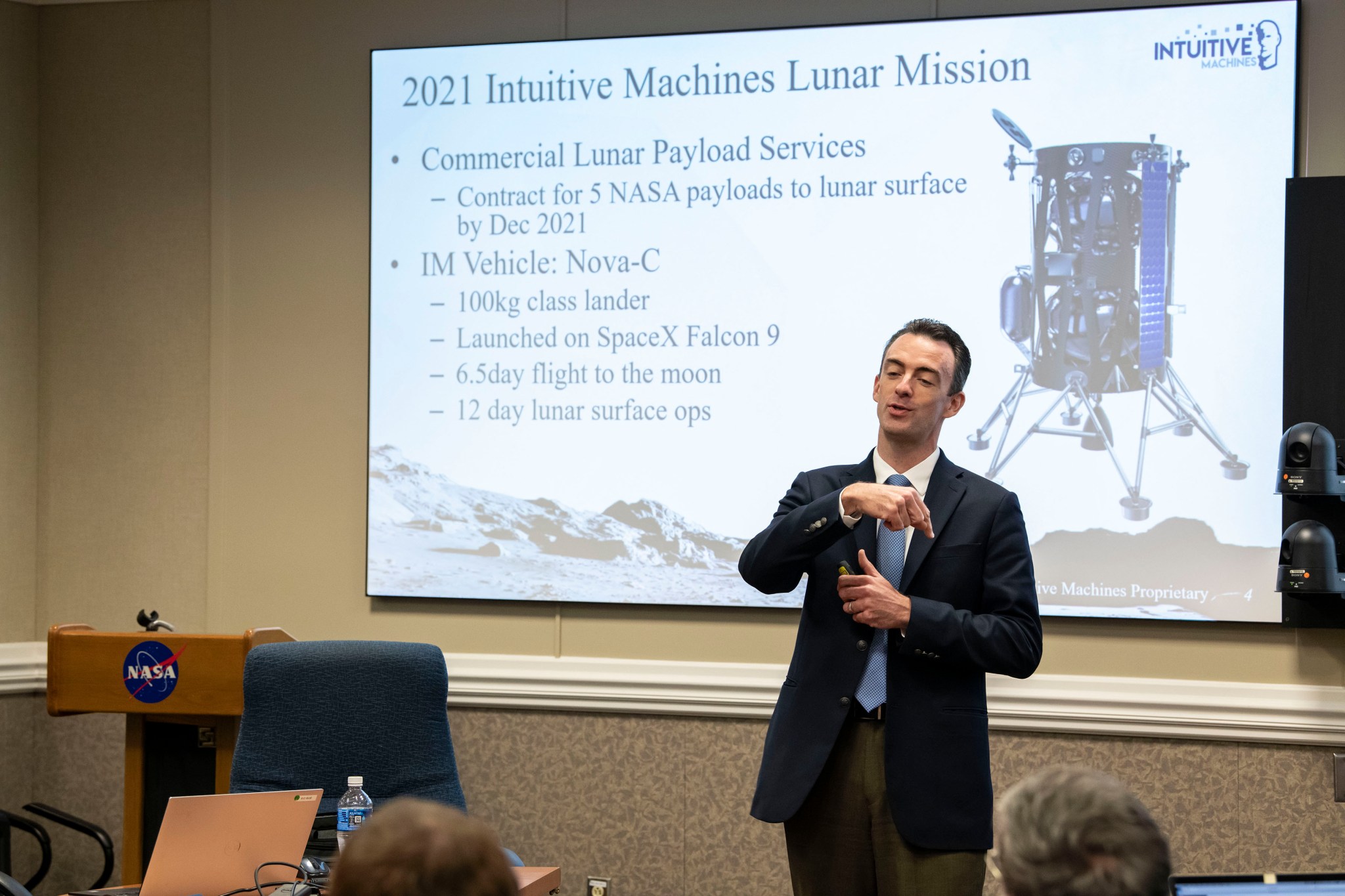
Rob Morehead, lead propulsion engineer for Intuitive Machines in Houston, delivers the monthly Tech Talk on Oct. 24 at NASA’s Marshall Space Flight Center. Morehead presented Intuitive Machines’ Nova-C lunar lander, which will deliver payloads to the surface of the Moon for government and commercial customers, including NASA. Intuitive Machines was selected by the agency as one of the companies for NASA’s Commercial Lunar Payload Service program. Nova-C currently has five NASA payloads and two commercial payloads manifested for its first flight, slated to launch in 2021. It will reach the Moon six days after launch and operate on the lunar surface for 12 days. Morehead worked at NASA’s Johnson Space Center for 20 years before joining Intuitive Machines. The Tech Talk series is presented by the Marshall Center Chief Technologist’s Office. The next Tech Talk, scheduled for Nov. 14, will feature Ben Feist, creator of the Apollo in Real Time website. (NASA/Fred Deaton)
This Week in NASA History: First Flight of FOXSI – Nov. 2, 2012
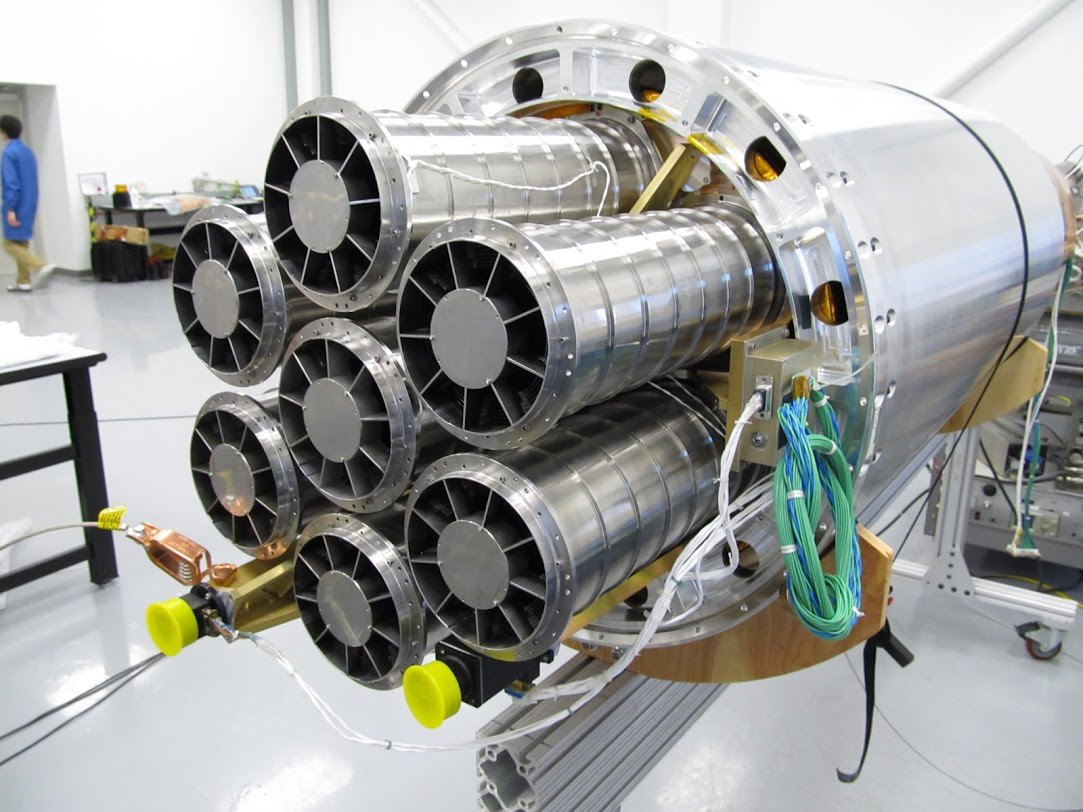
This week in 2012, the Focusing Optics X-ray Solar Imager was launched aboard a sounding rocket from White Sands, New Mexico, to study smaller, barely visible events of the Sun called nanoflares. FOXSI made use of a telescope that was able to focus on incoming high-energy X-rays from the Sun in a way that was not previously possible for solar observations. Here, the FOXSI instrument is shown composed of seven grazing-incidence telescope modules, each with nested shells. NASA’s Marshall Space Flight Center developed the optics for FOXSI. The NASA History Program is responsible for generating, disseminating and preserving NASA’s remarkable history and providing a comprehensive understanding of the institutional, cultural, social, political, economic, technological and scientific aspects of NASA’s activities in aeronautics and space. For more pictures like this one and to connect to NASA’s history, visit the Marshall History Program’s webpage. (NASA)







